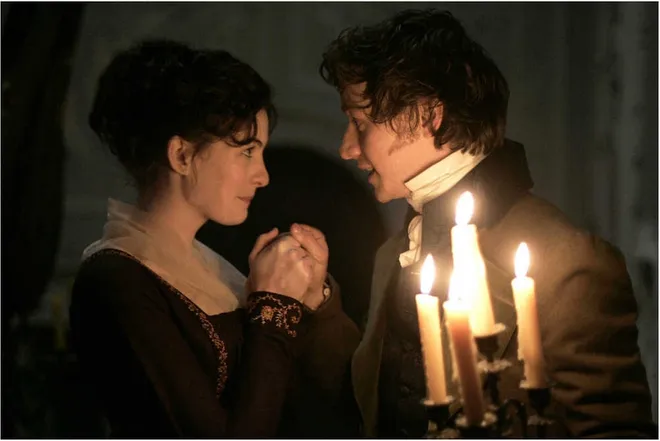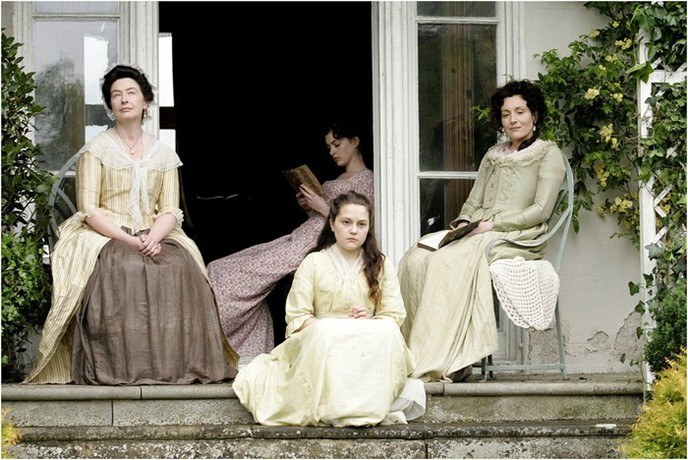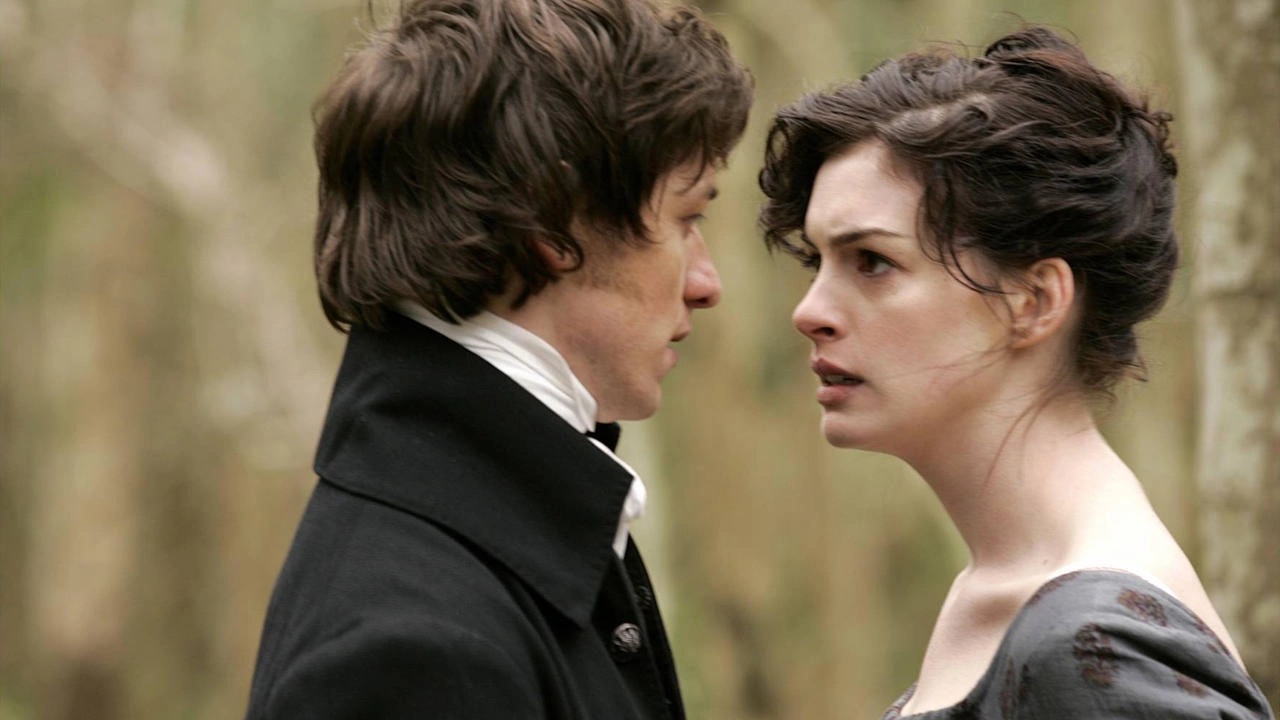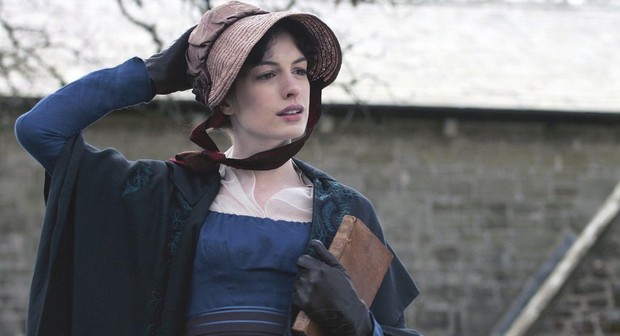Becoming Jane (2007)
Becoming Jane (2007), directed by Julian Jarrold, is a captivating romantic drama that offers a fictionalized account of the early life of one of England’s most beloved authors, Jane Austen. The film explores the formative years of Austen, her personal experiences with love, and how these experiences may have influenced her iconic novels. With an impressive cast featuring Anne Hathaway as Jane Austen and James McAvoy as Thomas Langlois Lefroy, Becoming Jane brings to life the historical backdrop of the 18th century while highlighting the complex emotional journey of a woman ahead of her time.
Becoming Jane centers around the young Jane Austen, a woman who is already exhibiting her sharp wit, literary talent, and keen observation of human nature. The film delves into her relationship with Thomas Langlois Lefroy (played by James McAvoy), a charming and roguish Irishman who becomes the love of her life. However, their love story is not destined for happiness, as Jane’s family, particularly her parents, are eager to see her marry for security rather than love. Lefroy, though passionate and intelligent, is unable to offer Jane the security and wealth that society expects of her, leading to an inevitable heartbreak.
The narrative follows Jane’s internal and external conflicts as she navigates the tension between personal desires and societal expectations. While Jane’s relationship with Thomas is full of emotional intensity, her story is also deeply intertwined with her struggles to establish herself as a writer in a world that largely underestimates women. Ultimately, Becoming Jane imagines how her experiences with love and loss helped shape the themes of her novels, including the balance of love, duty, and independence that permeates works like Pride and Prejudice, Sense and Sensibility, and Emma.
One of the central themes of Becoming Jane is the blossoming and doomed romance between Jane Austen and Thomas Lefroy. The film portrays their relationship as one of deep passion and intellectual connection. Lefroy, a charming young man from a poor Irish family, is initially intrigued by Jane’s wit and independent spirit. At the time, Jane is caught between her family’s desire for her to marry well and her own yearning for true love. Thomas, who is struggling to secure his future, finds himself drawn to Jane, even though he is not in a position to marry her due to his financial circumstances.
Their romantic connection is fraught with tension, as Jane is torn between her feelings for Thomas and her family’s pressure to marry someone more financially stable. Throughout the film, Jane and Thomas engage in witty, sparring dialogue, their banter reflecting the intellectual chemistry they share. The dynamic between them is one of equals, as Jane refuses to be dominated by the traditional gender roles of the time. Yet, their love affair is ultimately constrained by the societal norms of Regency England, where marriage was not just about love but also social standing and financial stability.
The film shows that, despite their deep affection for each other, Jane and Thomas must ultimately part ways. Thomas is persuaded by his family to marry another woman with a more substantial dowry, while Jane realizes that, as a woman of limited means, she cannot afford to indulge in a romance that would ruin her reputation. The tragic end of their relationship is poignant, showing that their love, though genuine, cannot survive the societal pressures of the time.
Becoming Jane explores the delicate balance between love and independence, a theme that runs throughout Austen’s own works. In the film, Jane is depicted as a woman who, despite her deep feelings for Thomas, is unwilling to sacrifice her intellectual independence or her future as a writer. This conflict between romantic desire and personal autonomy is central to the narrative, reflecting the broader societal constraints placed on women during the Regency era.
The film shows Jane struggling with the idea of marriage. While she deeply desires love, she also recognizes the societal pressures and expectations that come with it. Her relationship with Thomas is not just about passion but also about finding a way to navigate the role of women in a patriarchal society. As much as Jane loves Thomas, she refuses to accept that love should come at the expense of her independence or her dreams of becoming a successful writer. In this way, the film imagines how Jane’s personal life might have influenced the themes of her novels, which often center around the conflicts between social expectations and personal desires.
In addition, Jane’s family plays a crucial role in shaping her views on marriage. Her parents, while loving, are pragmatic about the importance of securing a financially stable future through marriage. This pressure, which Jane resents, mirrors the social realities that women in her time faced. Jane’s father, a clergyman, is portrayed as a loving but somewhat complacent figure, while her mother pushes her toward marriage for financial security. Throughout the film, Jane’s struggle to assert her independence amidst this family dynamic is an important aspect of her character development.
While Becoming Jane focuses heavily on her romantic life, the film also highlights Jane Austen’s ambition as a writer. The film imagines how Jane’s experiences, especially her relationship with Thomas Lefroy, may have shaped her literary works. In particular, her early works such as First Impressions (which would later become Pride and Prejudice) are shown to be inspired by her observations of her own life and the social constraints placed on women.
In one of the key moments of the film, Jane shares her passion for writing with Thomas, revealing that her greatest ambition is to be a successful author. Throughout the movie, her desire to write and be recognized for her talent is portrayed as central to her character, even though she must often keep it hidden due to the social limitations placed on women. The film touches on the idea that Jane’s writing was a way for her to express her deepest feelings, frustrations, and critiques of society. It is clear that, despite the societal pressures on her to marry and conform, Jane’s writing was an outlet for her to challenge the norms and explore the complexities of love, independence, and social class.
The performances in Becoming Jane are strong and carry a lot of emotional depth. Anne Hathaway, who plays Jane Austen, brings a quiet strength to the role, capturing both the intellectual brilliance and the emotional vulnerability of the young author. Hathaway’s portrayal of Jane is layered and nuanced, showing her as a woman who is both ahead of her time and trapped by the societal expectations placed on her. Her chemistry with James McAvoy, who plays Thomas Lefroy, is palpable. McAvoy brings charm, wit, and emotional depth to his portrayal of the conflicted young man, whose love for Jane is both passionate and ultimately tragic.
The film’s cinematography also adds to its emotional impact. The lush landscapes and period-appropriate costumes transport the audience to the Regency era, while the intimate, close-up shots capture the emotional complexity of the characters. The film’s pacing, while slow at times, allows for the emotional development of the characters, particularly the relationship between Jane and Thomas.
Becoming Jane is a beautifully crafted film that not only tells the story of the early life of Jane Austen but also explores the themes of love, independence, and societal pressure that are central to her literary works. By imagining how Jane’s romance with Thomas Lefroy might have influenced her novels, the film offers a compelling narrative that is both historically rich and emotionally engaging. Anne Hathaway’s strong performance as Jane and James McAvoy’s portrayal of Thomas Lefroy bring depth to the characters, while the film’s attention to historical detail and its focus on the societal constraints of the time create a poignant and thought-provoking story. Ultimately, Becoming Jane is a tribute to the woman who would become one of the greatest literary figures of all time, highlighting how her personal experiences shaped her enduring works of fiction.















